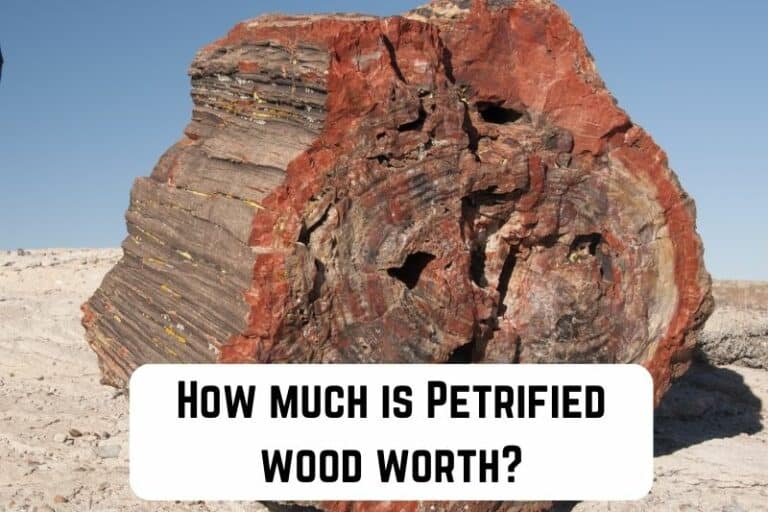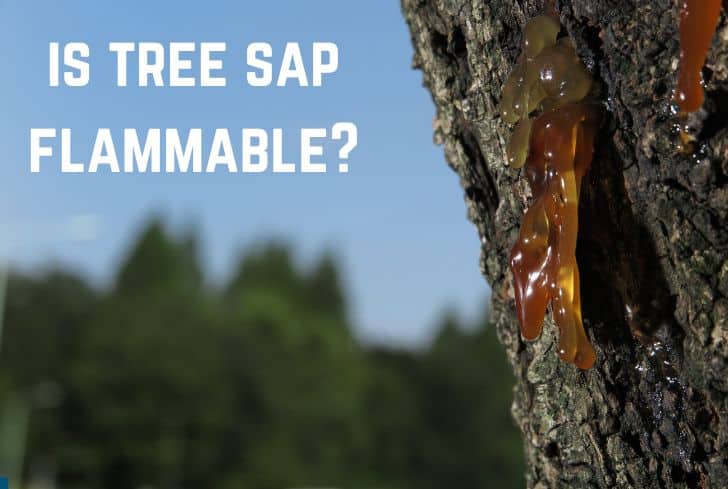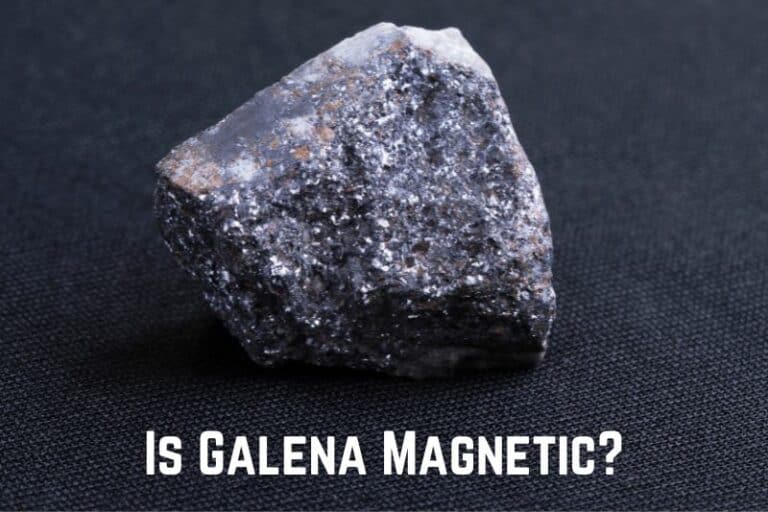Is Iron Oxide Magnetic? (Answered)

Did you know that hazelnuts and cocoa beans both contain iron oxide? It’s common in food-related products. But iron oxide also has a significant impact on a variety of biological and geological processes. Due to its unique qualities, iron oxide is abundant in nature and widespread in most industries. But is iron oxide magnetic?
We have an interesting answer to that question. But we start by describing iron oxide before answering whether it is magnetic. In the same article, we discuss whether iron oxide is a compound and whether it is acidic or basic. The uses and properties of iron oxide are listed last.
Read: Is Bismuth Magnetic? (No Way)
What is Iron Oxide?
Iron oxide is a chemical substance composed of iron and oxygen. Simply put, the oxidation of iron causes iron oxide. Fe2O3 is its chemical composition. In nature, iron oxide is an abundant compound. Ferric oxide, rust, ferric iron, red iron oxide, hematite, iron sesquioxide, and rouge are some of its other names. Iron oxide is a solid reddish-brown substance that usually occurs in powder form.
The earth naturally contains iron oxide, but manufacturers also use Penniman red to make it. Iron oxide, however, is poisonous and a deadly substance for humans. Long-term exposure to iron oxide could result in bad health. Among the severe health problems are:
- It severely irritates the skin and eyes when absorbed via the skin.
- It irritates the respiratory tract when inhaled or consumed.
- Permanent “iron” staining of the eyes results from prolonged or unprotected exposure to iron oxide.
- You can also get Pneumoconiosis by inhaling dust or vapors of iron oxide.
Keep iron oxide in a tightly sealed, dry, well-ventilated container to prevent exposure. Wear personal protection equipment and follow safe industrial hygiene standards when handling iron oxide. Ensure careful disposal of iron oxide and the container in an approved waste disposal plant.
Is Iron Oxide Magnetic?
Iron oxide is magnetic. The outer shell has two unpaired electrons that point in the same direction. Most iron oxides possess ferromagnetic characteristics that enable them to become magnetic in an outside magnetic field. It exhibits antiferromagnetic characteristics at temperatures lower than 8.6°F (-13°C).
No net magnetization exists because the two unpaired electrons face opposite directions, canceling one another.
Iron oxide exhibits weak ferromagnetism up to 1112°F (600°C). The magnetic properties of the two principal iron oxides differ, though. Black iron oxide ( Fe3O4-magnetite) is a naturally occurring iron oxide magnet. It is the most magnetic mineral of all the minerals on earth. Black iron oxide has both Fe2+ and Fe3+ ions. Therefore, its chemical names are iron (II) and iron (III) oxide.
Fe2O3, or red iron oxide, is not magnetic. Hematite and rust are two other names of red iron oxide. Its chemical name is iron(III) oxide; all its ions are Fe2+. Steel consists of red iron oxide as one of its components. It occurs naturally as a reddish-brown solid and is insoluble in water.
Iron oxide is, nevertheless, less magnetic than iron. Iron possesses four unpaired electrons compared to iron oxide’s two.
Is Iron Oxide a Compound?
Two elements, iron, and oxygen, are combined chemically to form iron oxide. It belongs to the group of substances called transition metal oxides. They are inorganic compounds with an oxygen atom in an oxidation state of -2. Iron and oxygen combine chemically to form a compound. However, the molecule lacks the properties of either individual elements.
Atom is the name given to the smallest product created as a result. The chemical formula represents one molecule of a compound. In the case of iron oxide, it is (Fe2O3). Iron oxide’s chemical formula shows the composition of the compound, with the elements present denoted by the symbols (Fe+O). The subscripts (2+3) indicate the number of atoms in each component.
Iron and oxygen cannot separate physically from each other once the chemical reaction to form iron oxide occurs. The separation must occur chemically. New bonds, which can be either ionic or molecular, form. Ionic bonds are present in iron oxide due to the metal iron and non-metal oxygen interaction. Ionic bonds form when electrons are transferred from a metal to a non-metal to give both atoms a full valence shell.
Is Iron Oxide Acidic or Basic?
Iron oxide is amphoteric. It, therefore, possesses both basic and acidic characteristics. Iron oxide is known as acidic if it reacts with water to create an acid. Iron oxide combines with water and produces a base, which is known as a basic oxide. The oxide turns into a neutral oxide when it is neither acidic nor basic.
Compounds that absorb water to generate either an acid or a base are known as anhydrides (without water). Acidic oxides are typically oxides of non-metals, primarily those belonging to the periodic table’s groups 14–17. Salts forms when acidic oxides react with bases.
Group 1 and 2 elements combine to generate bases called basic oxides. They are metal oxides. If the oxide is water soluble, it will react with the liquid to form hydroxides. Salts form when basic oxides and acids interact. Red iron oxide (rust)is a basic oxide. It has a pH of about 8.2.
Amphoteric oxides combine with acids to form salt and water, which have fundamental properties. They create salt and water with acidic qualities when they interact with alkalis.
When neutral oxides interact with acids and bases, they do not produce salts because they possess neither basic nor acidic properties.
Properties of Iron Oxide
Iron ores are almost always oxides. Rocks and minerals known as iron ores help in extracting metallic iron economically. The ores are abundant in iron oxide, but their colors range from rusty red to bright yellow to deep purple. Overall, iron oxides have a variety of properties, which we highlight in the table below.
| Physical properties | Chemical properties |
| -Reddish brown powder/ black crystal. | -Reacts with water to produce iron hydroxide. |
| -Odorless substance. | -Has a variable pH range of 5.5 to 8.2, with 6.5 being the optimum level. |
| -Mainly occurs in powder form. | -Its melting point is 2849°F(1565°C ) and boiling point is 6177.2°F(3414°C ). |
| -It’s soluble in strong acids but water insoluble. | -Reacts with sulfuric acid to produce iron (III) sulfate and water. |
| -Has a molecular weight/molar mass of 159.69 g/mol. | |
| -The density is 5.242 g/dm3 |
Uses of Iron Oxide
It is a highly effective inorganic substance. It has various commercial uses and is highly popular across industries. We highlight its numerous benefits.
- It serves as a pigment in dental composite.
- The iron and steel industries use it as a raw material to generate large amounts of iron, steel, and other alloys.
- Excellent for photocatalysis—a solar water oxidation anode.
- Rouge, a fine iron oxide powder, is used to polish jewelry made of metal and eyeglasses.
- Iron oxide serves as a pigment in skincare and cosmetics. Additionally, it protects the skin from observable blue light. Iron oxide-containing cosmetics are beneficial for those with melasma, a common skin ailment that results in darkened skin spots. The condition occurs due to sun exposure or changes in hormones.
- Iron and zinc oxide are ingredients in anti-itch medications like Calamine lotion. Its active ingredient helps to relieve itchiness.
- Standard magnetic compounds like iron oxide are used in storage and recording media like disks and cassettes.
- Red iron oxide colors concrete and mortar. Additionally, it is a component in producing paving blocks, designer tiles, stamped concrete, and chequered tiles.
- Inks used for copperplate and dye stamping are typically black iron oxide.
- Its salt is a flocculant in wastewater treatment, fertilizer manufacturing, feed additives, and the dyeing of textiles.
Read: Is Magnetite Magnetic? (Answered)
Conclusion
Black iron oxide, also known as magnetite, is a natural magnet, while red iron oxide has weak ferromagnetism. Iron oxide is a chemical substance composed of iron and oxygen. It is a compound since its two elements combine in a chemical reaction.
Iron oxides are usually amphoteric, exhibiting properties of basic and acidic properties. These properties make iron oxide have valuable applications in cosmetics, pharmaceuticals, electronics, and other industries.
Frequently Asked Questions
Where is iron oxide found in nature?
The two most prevalent iron oxides, black and red iron oxide, are the 16 forms that can exist naturally. They build on geologically old parent materials in humid, tropical areas with naturally occurring rainforest flora.
Others, like black iron oxide, occur in sedimentary, metamorphic, mafic, and ultramafic rocks. Since hematite is a component of rust that develops on iron objects that come into contact with air, red iron oxide can be found in nature.
What dissolves iron oxide?
Water does not dissolve iron oxide. However, it dissolves in powerful acids like sulfuric and hydrochloric acids. Additionally, it dissolves in chelating agents like oxalic acid and EDTA (ethylenediaminetetraacetic acid) solutions.
The majority of iron oxides may be dissolved most effectively by oxalic acid. It possesses complex solid capabilities and high reducing powers compared to other organic acids. There is less chance of contamination of the treated materials after calcination.
Which is the better-reducing agent for iron oxide?
Solid carbon or gaseous carbon monoxide works best as iron oxide reducers. Ferric oxide’s oxygen is reduced by carbon taking its electrons. Iron (Fe) eventually remains.






